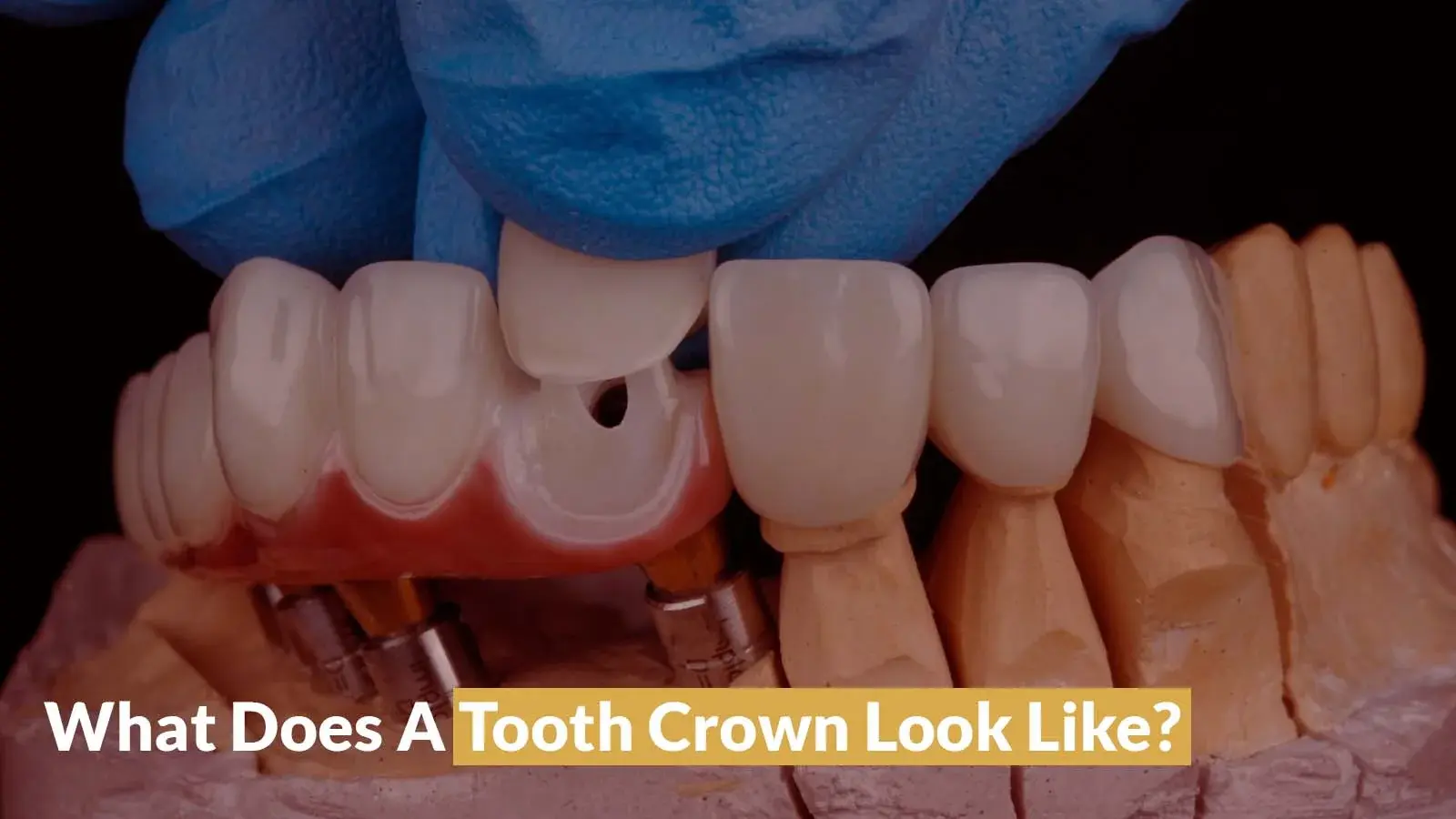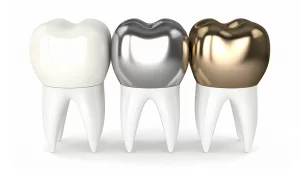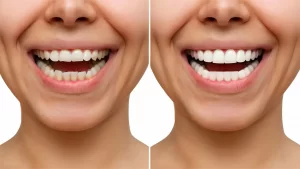
Discover the essentials of dental crowns, including their function and what a tooth crown looks like. Get informed about this key dental treatment.
Dental crowns are a common solution for restoring damaged teeth. They serve both functional and aesthetic purposes, protecting teeth while improving their appearance. Here’s what you need to know about dental crowns and their appearance.
Table of Contents
ToggleWhat is a Dental Crown?
A dental crown is a cap placed over a tooth to restore its shape, size, strength, and appearance. Crowns are used for several reasons, including:
- Protecting weak teeth from breaking
- Restoring broken or worn-down teeth
- Covering and supporting teeth with large fillings
- Holding dental bridges in place
- Covering misshapen or severely discolored teeth
- Covering dental implants
Types of Dental Crowns

Dental crowns are a versatile solution for restoring and protecting damaged teeth. The choice of material affects the crown’s appearance, durability, and cost. Here’s a breakdown of the types of dental crowns available and their benefits.
1. Porcelain or Ceramic Crowns
Appearance: Best for front teeth due to their natural color and texture that match existing teeth.
Benefits: Ideal for people with metal allergies. They provide a high aesthetic value and are suitable for those looking to improve their smile.
Considerations: While strong, they can be less durable than metal crowns, especially on back teeth.
2. Gold Alloys
Appearance: Distinctive gold color, noticeable compared to natural teeth.
Benefits: Highly durable and wear-resistant. They do not fracture or wear the teeth opposite them.
Considerations: The color makes them a less popular choice for visible teeth.
3. Base Metal Alloys
Appearance: Metallic and silver in color.
Benefits: Extremely strong and resistant to corrosion. Require the least amount of healthy tooth to be removed before fitting.
Considerations: Like gold, their metallic color doesn’t match natural teeth, making them less suitable for front teeth.
4. Porcelain Fused to Metal (PFM)
Appearance: Offers a balance between aesthetics and durability. The metal core provides strength, while the porcelain exterior can be matched to neighboring teeth.
Benefits: Stronger than porcelain alone and more aesthetically pleasing than metal crowns.
Considerations: The porcelain can chip or break, and the metal underlay might show through as a dark line at the gum.
5. Zirconia Crowns
Appearance: White and translucent, closely resembling the look of natural teeth.
Benefits: Combines the strength of metal with the aesthetics of porcelain. Can be made in a dental office in one visit using computer-aided design/manufacturing (CAD/CAM) technology.
Considerations: The strength of zirconia might wear down the opposing teeth slightly more than other types.
6. E-Max (Lithium Disilicate)
Appearance: Highly aesthetic with a glass-like appearance that closely mimics natural tooth enamel.
Benefits: Exceptional durability and strength for a ceramic crown, making them suitable for front and back teeth.
Considerations: Can be more expensive than other types due to the material and technology involved.
What Does a Tooth Crown Look Like?
The appearance of a dental crown varies depending on the chosen material:
- Porcelain/Ceramic Crowns: Mimic the translucency and color of natural teeth, making them blend seamlessly.
- Gold and Metal Crowns: Metallic in appearance, they stand out more than porcelain or ceramic crowns but offer exceptional durability.
- Porcelain Fused to Metal: These crowns have a metal core for strength, with a porcelain exterior for a more natural look. However, the metal lining might sometimes be visible at the gum line.
Dental Crowns Before and After

Dental crowns play a crucial role in dental restoration, offering both functional benefits and aesthetic improvements.
Before Dental Crowns
Patients might seek dental crowns for various reasons, including:
- Damaged Teeth: Cracked, chipped, or broken teeth due to accidents or wear and tear.
- Decay: Large cavities that compromise the tooth structure.
- Worn Down Teeth: Teeth worn from grinding or other causes.
- Cosmetic Improvement: Misshapen, uneven, or severely discolored teeth.
- After Root Canal Treatment: Teeth that have undergone root canal treatment and need protection.
After Dental Crowns
After the dental crown procedure, patients can expect:
- Restored Strength: Crowns encase the entire visible portion of a tooth, providing it with stability and protecting it from further damage.
- Improved Appearance: Crowns are custom-made to match the color, shape, and size of natural teeth, enhancing the smile’s appearance.
- Enhanced Functionality: With the damaged tooth structure covered, patients can enjoy a restored bite and chewing ability.
- Durability: Depending on the material, crowns can last from 5 to 15 years or longer, with proper care.
- Protection: Crowns safeguard against further decay, tooth breakage, and protect after root canal therapy.
Dental Crowns Vs Caps
Dental Crowns and Caps: Is There a Difference?
“Dental crowns” and “caps” are two terms used interchangeably to describe the same dental procedure.
Dental Crowns: This term emphasizes the restorative aspect, highlighting its role in “crowning” or completely covering the tooth.
Caps: A more colloquial term, it visually describes how the crown fits over the tooth, similar to how a cap fits over your head.
The Process of Getting a Crown
Getting a dental crown usually requires two visits to the dentist:
- First Visit: The dentist prepares the tooth by reshaping it and takes impressions to create the crown. A temporary crown might be placed.
- Second Visit: The temporary crown is removed, and the permanent crown is adjusted as needed and cemented into place.
FAQs
A dental implant before the dental crown looks like a metal post or screw placed into the jawbone.
Dental insurance often partially covers crowns, depending on the policy.
Temporary dental crowns typically last for a few weeks up to a few months.
The dental crown process usually takes two visits over two to three weeks.
There is no evidence to suggest that dental crowns cause cancer.
Dental crowns cannot be whitened like natural teeth; their color is permanent.
Getting a dental crown generally requires two appointments spread over two to three weeks.
